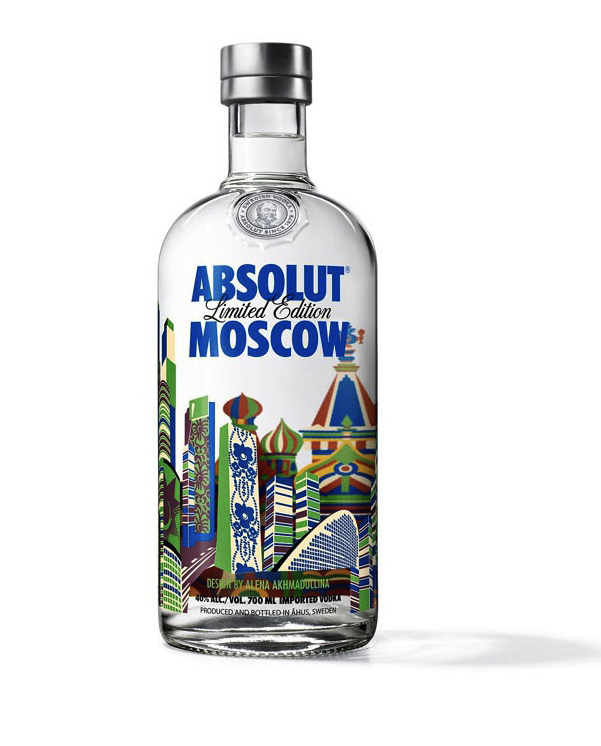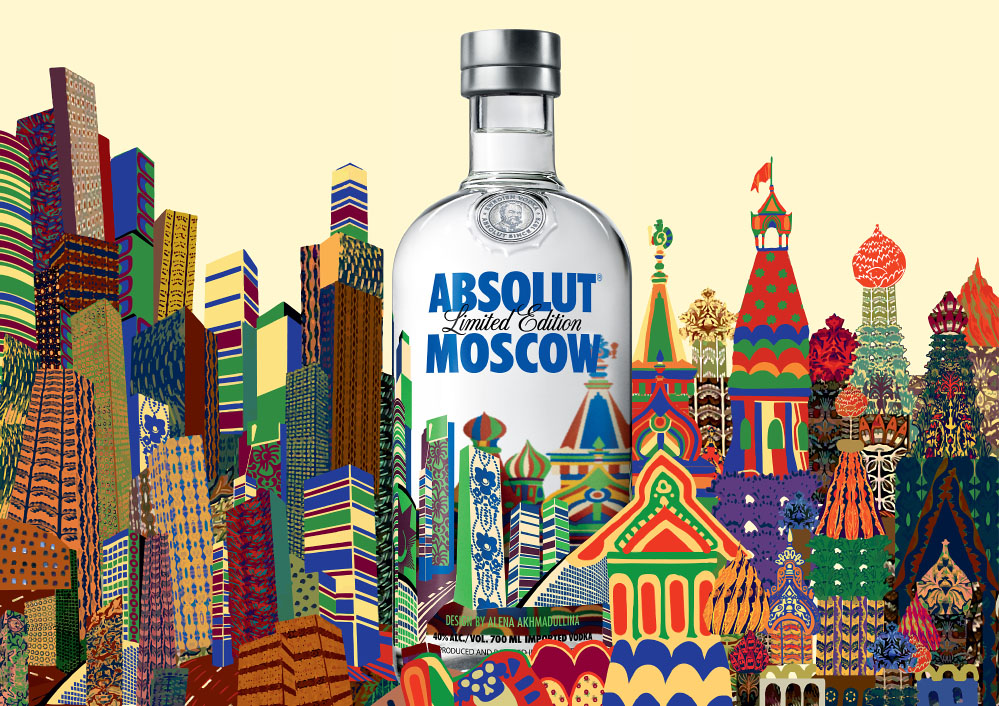Collaboration between artists and designers can be rewarding for all parties and can bring real value to clients and to each other. But everyone should go into the partnership with eyes wide open to the challenges and potential pitfalls of bringing people inexperienced in packaging into that highly stressful, highly demanding world. If the client and the agency keep in mind the points covered in this article, the chances of a successful artist collaboration are very, very good!
Cocoon Group has had the pleasure of working with a number of outside artists on some truly beautiful projects. Most recently for instance, ABSOLUT Moscow was a high-profile collaboration between CG and Russian fashion designer, Alena Akhmadullina. We’ve has also worked with a number of less-well-known artists and students in the past, such as in our 2 year collaboration with the Becherovka Art.Edice limited editions done in 2011 and 2012. In this article, we share some of the knowledge we’ve collected from these interesting, yet unpredictable projects.

Photo: ABSOLUT Moscow bottle, clickable
Strong Contracts = strong partnerships
An artist who works on your pack becomes a de-facto endorsement and promotion engine with their own brand to protect. Bringing these brands together requires an airtight contract! Aside from ‘typical’ confidentiality and legal obligations of client, agency, and artist, there are a number of less obvious stipulations specific to this scenario. For instance, make sure it is clear whether or not the agency can make adjustments and changes to the work or whether the artist will insist on making their own adjustments. Some artists will get very anxious if other people touch their work and will insist on making changes themselves.
Also, make sure it’s clear what is expected and what is allowed in terms of promotion and PR. If your brand or category has guidelines, be sure to share those with the artist and make sure he/she is clear about what context discussion of the work can take place.
Artists are not Graphic Designers
The best answer to the question of what is the difference between artists and designers that we have heart is that designers work to solve other people’s issues while artists work to solve their own.
So what does that really mean in terms of their work and work style? For one thing, designers are generally used to working under a lot of outside pressures. Artists, for the most part don’t need to deal with deadlines, keeping regular working hours, frequent meetings, and comments of work-in-progress, unless they want to.
One result of this is that artists and designers are used to very different types of criticism. Artists work from inspiration, meaning that criticism leveled at their work is much more conceptual. Artist work is usually judged on the whole work rather than the details or execution. Designers, on the other hand, work from briefs, so criticism is often aimed at how they have execute and how well they’ve worked within the given constraints. Designers, by necessity, are used to hearing what needs to be ‘fixed’ in their work to make it acceptable to the client or to the medium. Artists almost never hear this and it often comes as a shock to them when they hear a long lists of adjustments and changes that need to be made. Be prepared to massage egos and deal with the potential discouragement that your well-meaning comments might cause!
Learning from both sides
There are a myriad of differences between packaging and other graphic art forms which you will need to explain. Most artists will be leaving their comfort zone to work on a pack design. What are the major differences between their own art form and pack design in terms of technique and process? What are the constraints in colors, materials, substrates, or print technologies that they might need to keep in mind as they think of ideas? What are the legal or category guidelines and regulations that they may need to follow?
You might want to learn about their own medium and its vocabulary as well. It will save you time and frustration later as you work and it’s fun and inspiring to learn about new techniques and technologies. You and the artist can come away with new knowledge and inspiration.
Understanding roles
From the outset, it is important that the agency, the artist, and the client define and understand each others roles. Is the agency there to instruct? To give direction? To lead in concept creation? Or simply to manage the application of the artwork onto the pack?
It should also be decided who plays what role in the promotion of the project. There are, in effect 3 entities which will want to use this collaboration to the best advantage, the client, the agency, and the artist. Best to decide right away where the compelling PR angle lies and make sure that everyone, for the most part, sticks to it when promoting the action.
Brand Ambassadors
As we discussed earlier, often a collaboration between an artist and a brand is actually a collaboration between two brands. Clients should look to work with someone who has the showmanship and brains to sell the collaboration in the real world to their own fans and to the client brand fans. Their personality and artistic style should be a good fit to the values of the brand for whom they design. Finally, the client should make sure that their packaging and print technology is a good fit for the artistic style of the artist! It’s no good for your brand or theirs if you hire an artist famous for multi-colored, highly detailed rainbow imagery to your black and white cardboard boxes.
Conclusion
You will no doubt appreciate the fresh perspective and new ideas that artists bring to your package design. In this article we hope we also helped you to appreciate the differences between our world and theirs and to identify some of the challenges that are inherent in bringing those worlds together. Just keep these differences in mind and you should be able to overcome them. Happy collaborating!
About the Author

Douglas Kaufman is the Head of Communications at Cocoon Group, which is an award-winning international agency offering a full selection of branding services.
